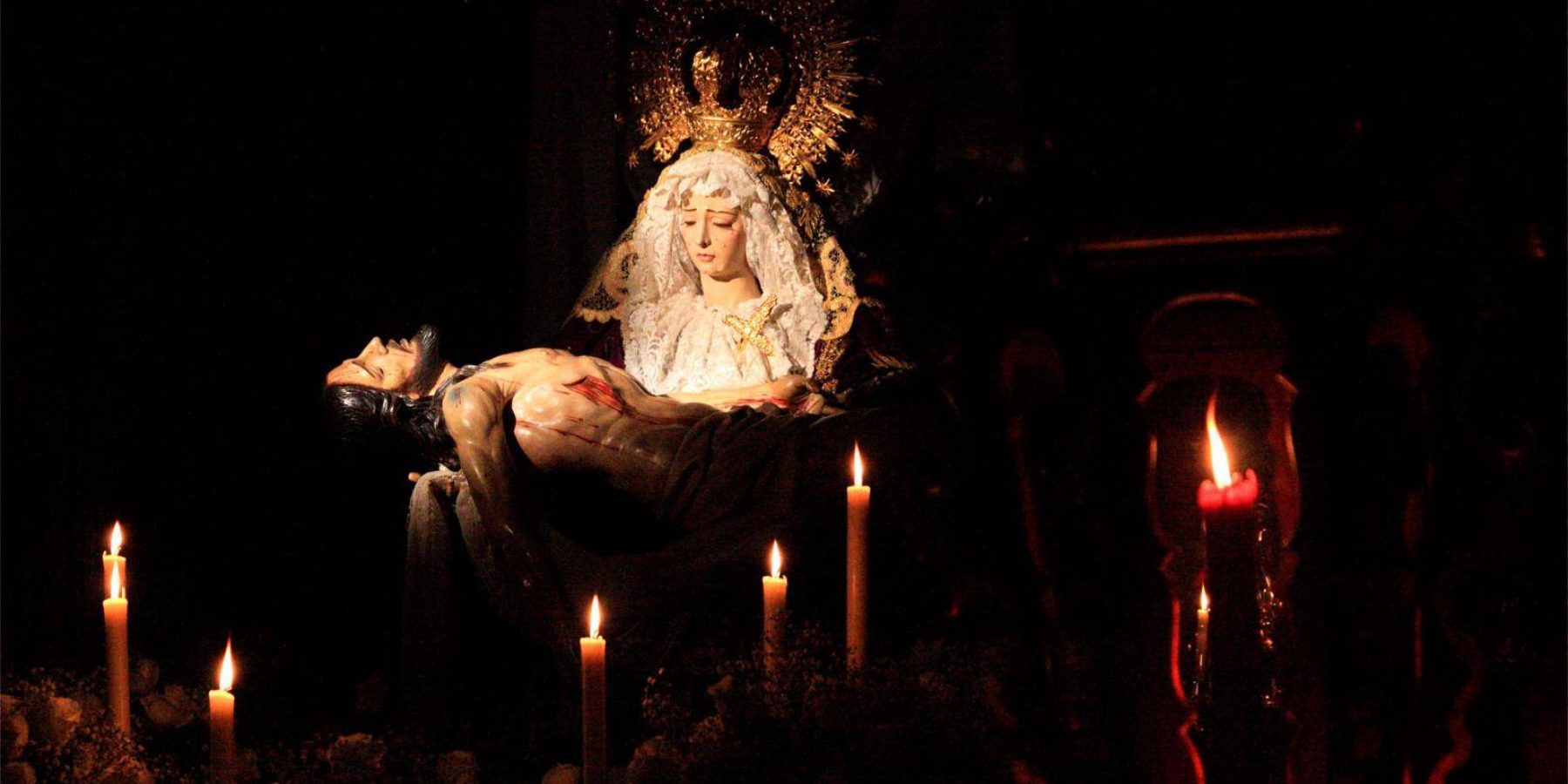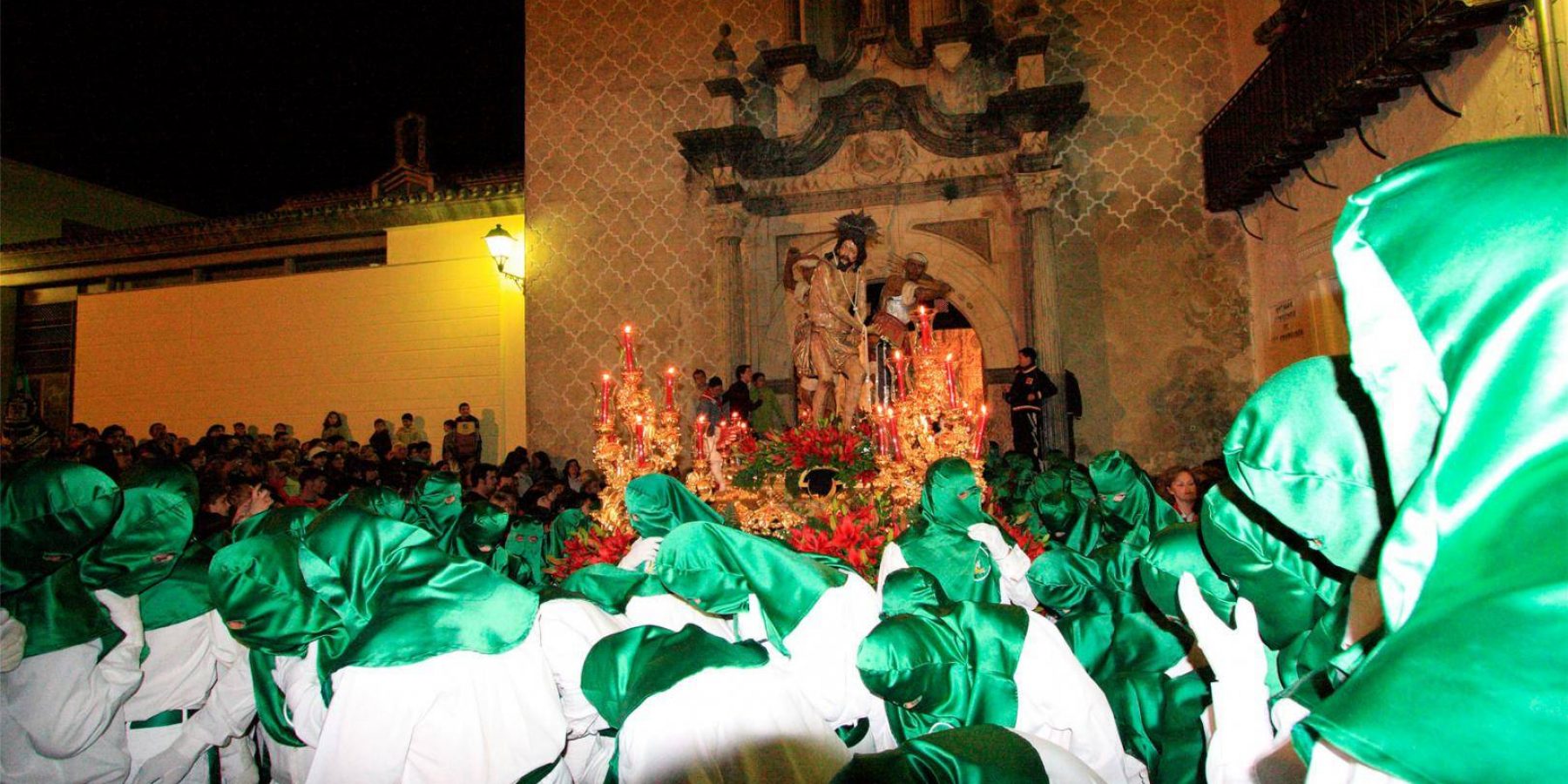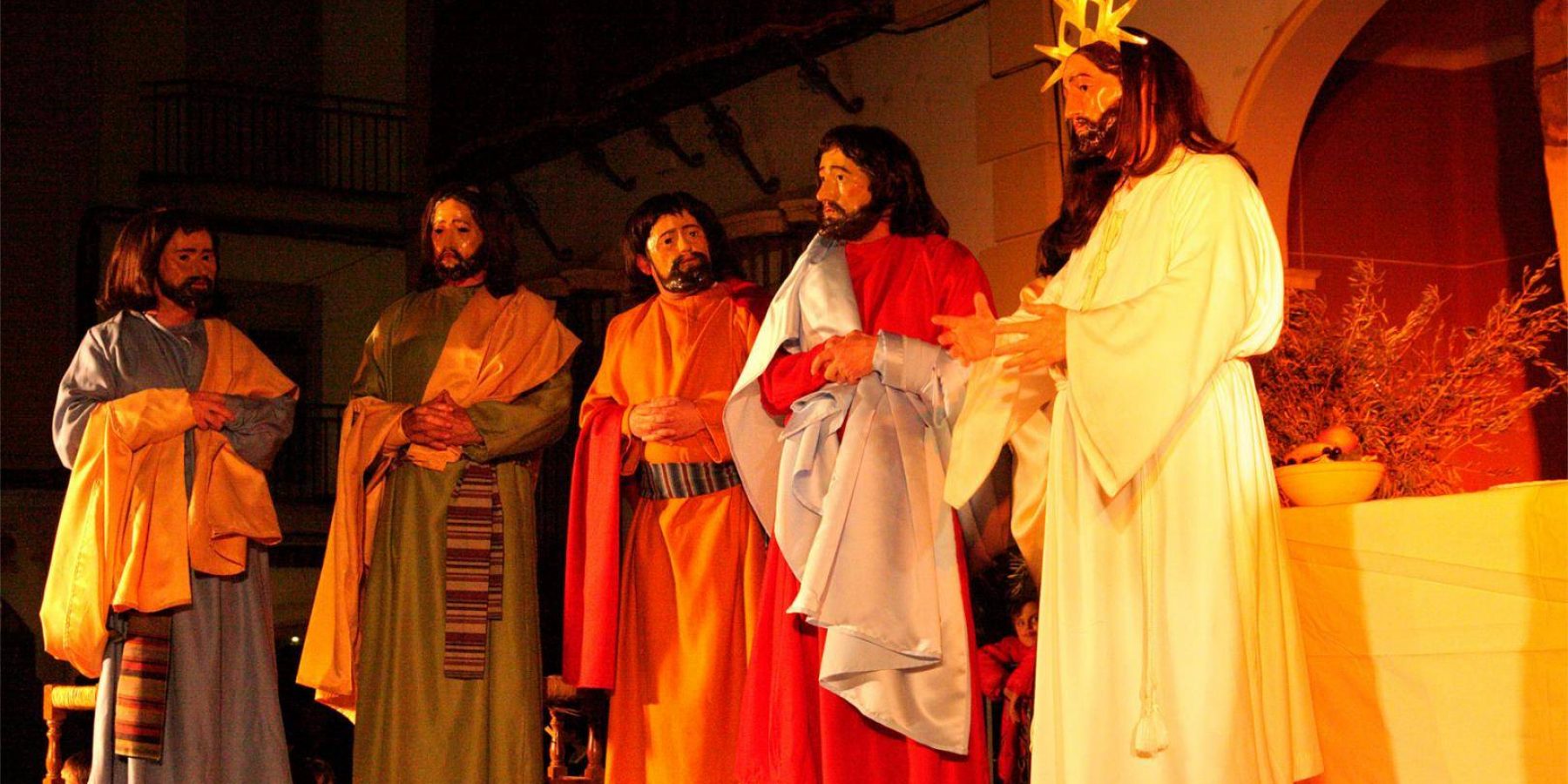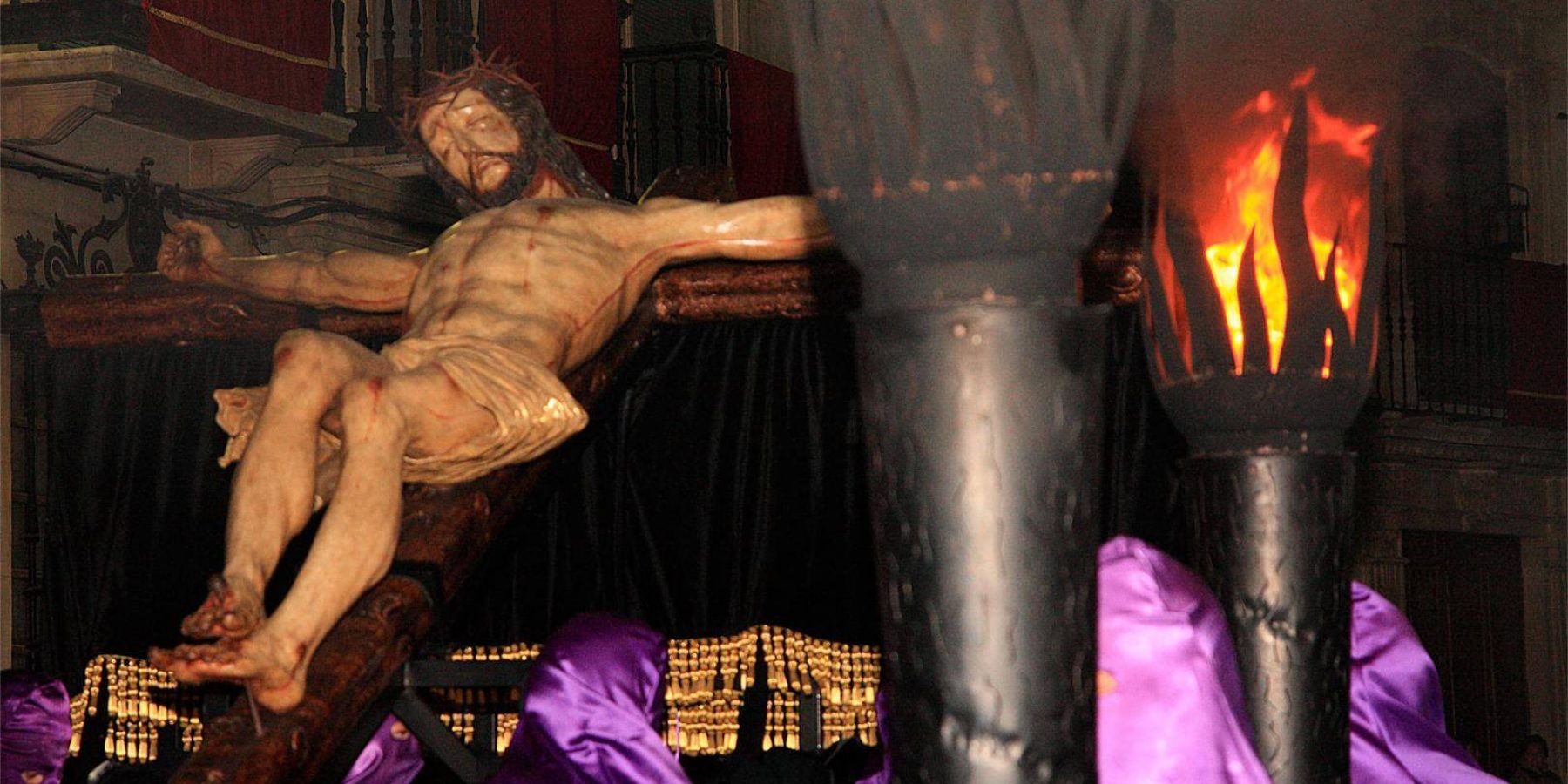PRIEGO DE CÓRDOBA, THE DULL ROAR OF THE DRUMS
Easter Week in Priego is characterized by the solemnity and the religious fervour of its celebrations. The different brotherhoods painstakingly prepare their processions to ensure a high degree of uniformity, with every last detail being attended to with diligence and enthusiasm. The silence and devotion of Priego’s penitents seem to project their deepest, most intimate feelings, and are only interrupted in the collective overflowing of emotions which follows their meeting with Jesus Nazarene.
The fasting of Lent, tempered by the numerous local dishes proudly served at his time of year, gives way to the heartrending wail of saetas which heralds the first day of processions. The first brotherhoods to set off on their journey are the youngest ones: the Entrada en Jerusalem (the Entry into Jerusalem) and La Paz (Peace). On Monday it is the turn of La Buena Muerta (the Good Death), whose image of Christ Crucified is carried through the streets of the town with no wooden frame, surrounded by handheld torches called hachones. On Holy Tuesday comes the Hermandad de la Expiración (Brotherhood of the Christ Expired). The penitents accompany the Cristo de la Expiración (Christ Expired) and La Virgen de los Desamparados (Our Lady of the Helpless) as they make their way along their intricate, winding route. But for outsiders perhaps the most striking event is the representation of the Seizing of Christ performed by the Hermandad de la Columna (Brotherhood of the Column) in the Plaza de la Constitución, after a parade by the different figures taking part. This is followed by the departure of Jesús Preso (Jesus the Captive).
The procession of Vera Cruz (the True Cross) and Jesús de la Columna (Christ of the Column), a beautiful sculpture by Alonso de Mena, on Holy Thursday might almost be considered an outdoor altar and museum. And in the early hours of the morning there is another chance to see the procession of La Buena Muerte. On the Friday, around El Nazareno, an element of contrast is introduced into the celebrations with the highly emotional popular ritual known as the bendición de los hornazos (“blessing of the Easter pies”). In the afternoon, Easter Week draws to a close with the procession of Las Angustias (Our Lady of Distress) and the solemn urn of El Santo Entierro (the Holy Burial). And on Easter Sunday La Virgen de la Cabeza (Our Lady of the Head) is joyfully taken out in procession with Christ Resurrected.
Contrasting periods
Contrasting periods: Past and present come together at Easter in Priego de Córdoba. Renaissance and Baroque sculptures take their place alongside classical and neo-classical images. But the most glorious days associated with the Easter tradition correspond to three specific periods. The earliest religious associations were founded after the Council of Trent: La Columna (The Column) (1550), Jesús Nazareno (Jesus e Nazarene) (1593) and Santo Entierro (The Holy Burial) (1594). The Baroque period saw the appearance of new entities which revitalised and augmented the celebrations: El Resucitado (Christ Resurrected) and La Caridad (Charity). But most of the brotherhoods came into existence more recently: a sure sign of the tradition’s continuing popularity.
El Pestiñez and El bacalao
At dawn on Good Friday a small group including El Pestíñez and El Bacalao (“the codfish”) roam the streets of Priego noisily announcing the big day that lies ahead. The ritual is known to have existed at least since 1602. El Pestíñez, wearing a sandy yellow jacket, ankle-length pants, high boots and a helmet with no plume, beats out the rhythm on his drum. El Bacalao, dressed in a similar costume, blares away with his bugle.
Prendimiento (The seizing of Christ)
We do not know exactly when this tradition first began, but the manner in which it was to be conducted was set out in the earliest statutes of the Archbrotherhood of Vera Cruz, drafted in 1674. It takes the form of a sacred play depicting the Last Supper, Jesus’ prayer in Gethsemane and His Arrest. Up until the middle of the 1950s the roles of the Apostles and Christ Himself were played by priests, but today that tradition is only maintained in the case of the leading character, the Lord Jesus. Also involved are sayones – the Jews who were ordered to arrest Christ. These figures have their faces hidden by masks to symbolize Man’s wickedness and perversion.
Bendición de los Hornazos
Good Friday dawns with a completely new feeling in the air. They say that on this day everyone is a nazareno in Priego de Córdoba. At eleven o’clock a huge crown packs into the space known as the Compás de San Francisco, jostling to see the image of Jesús Nazareno. The paso, surrounded by the crowds, moves on until it reaches El Palenque. There, to the cry of “paso redoblao” (“quickstep!”) the costaleros pick up speed for the rest of the journey to Calvary, where the multitude around the Virgin Mary eagerly awaits the bendición de los hornazos (blessing of the Easter pies). This is the climax to the Easter celebrations in Priego.
All year round
In the devotional festivals held on Sundays in May, Priego’s brotherhoods proudly exhibit their titular images on magnificent, profusely decorated altarpieces. Of all the different religious celebrations that take place in the town during the course of the year, one of the most remarkable is the lay tradition according to which the members of the Hermandad de la Aurora (Brotherhood of the Dawn) perform a sung Rosary every Saturday night.













